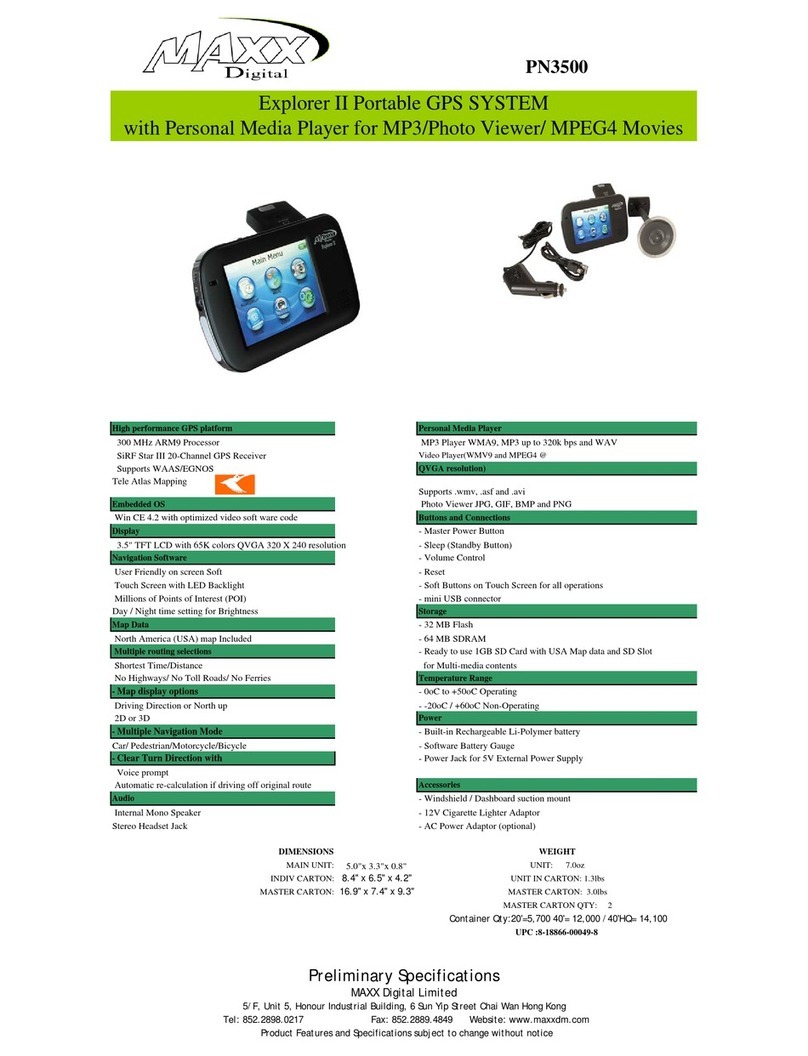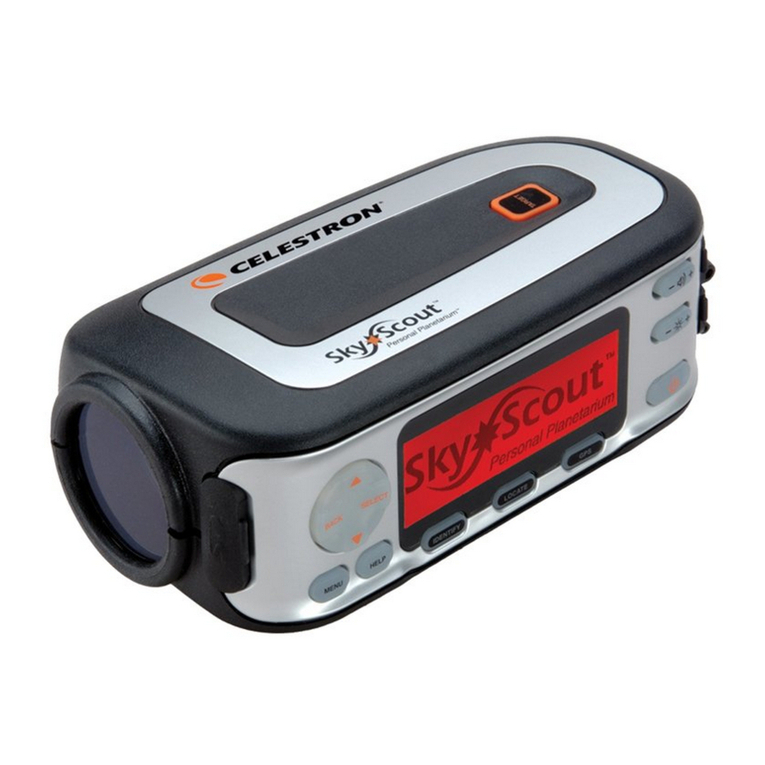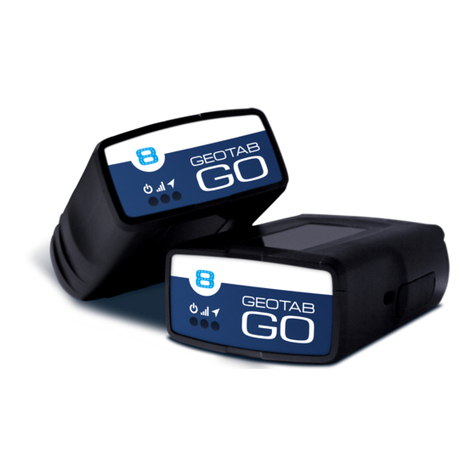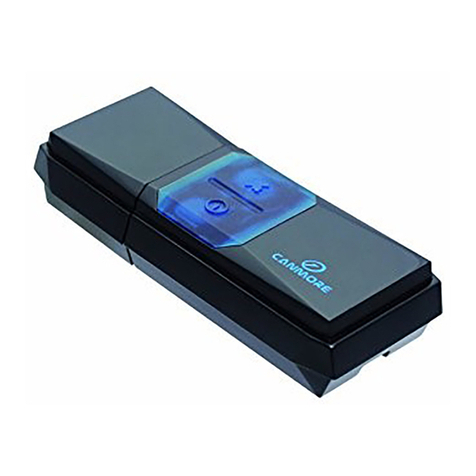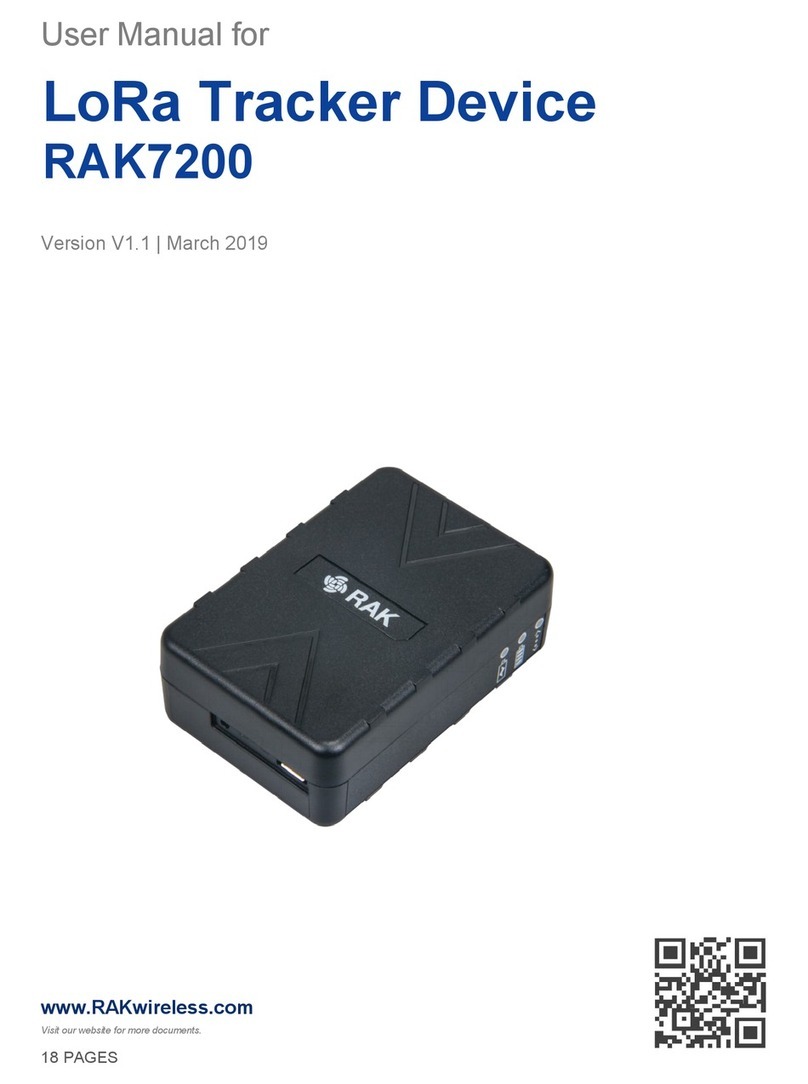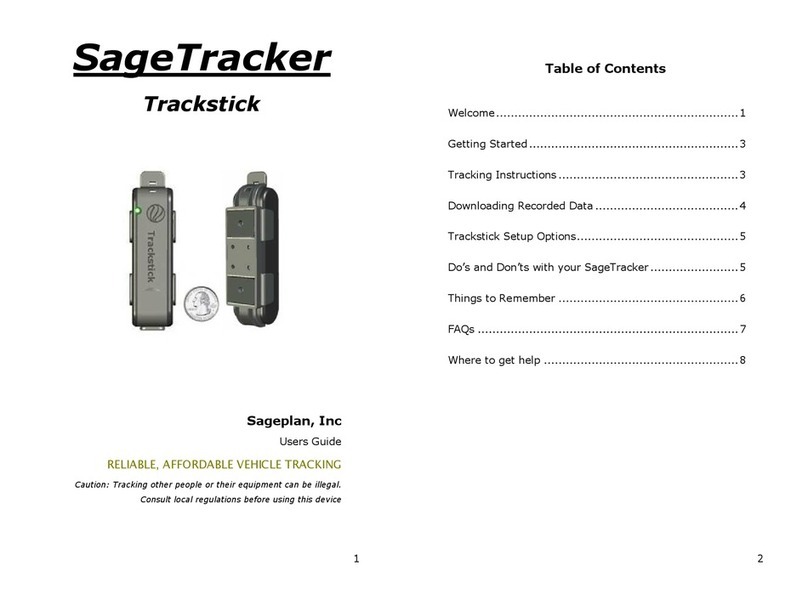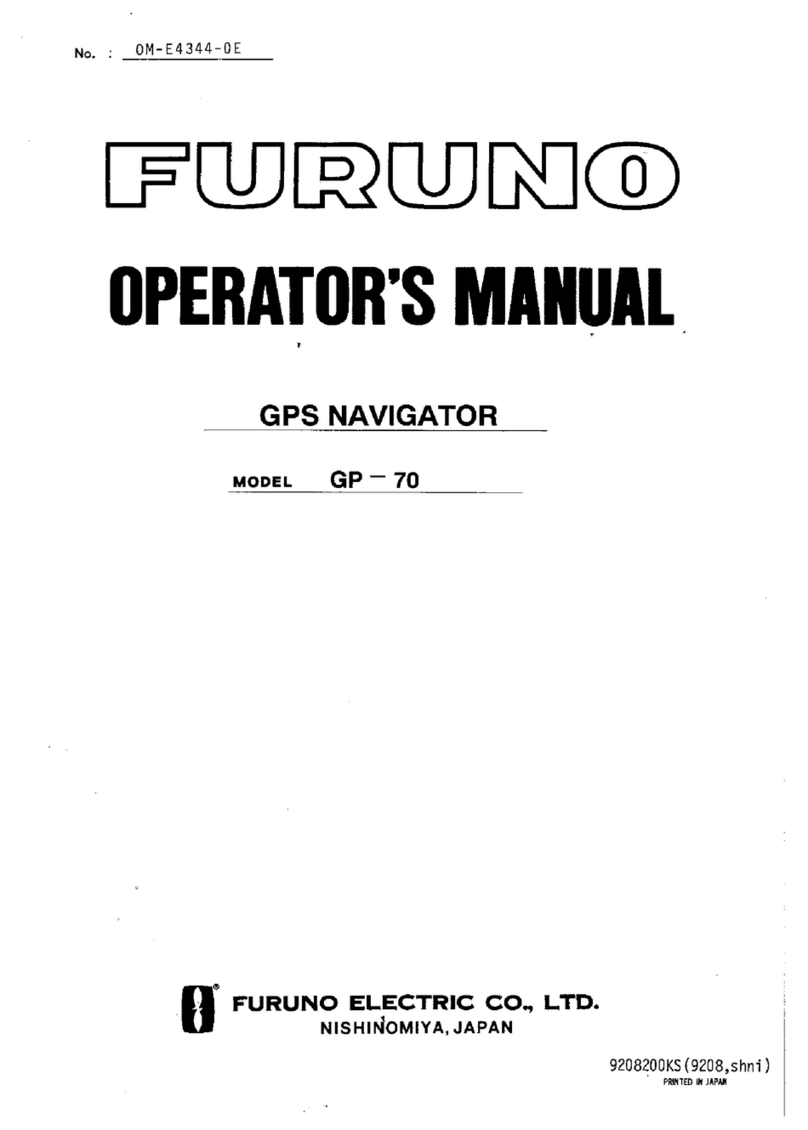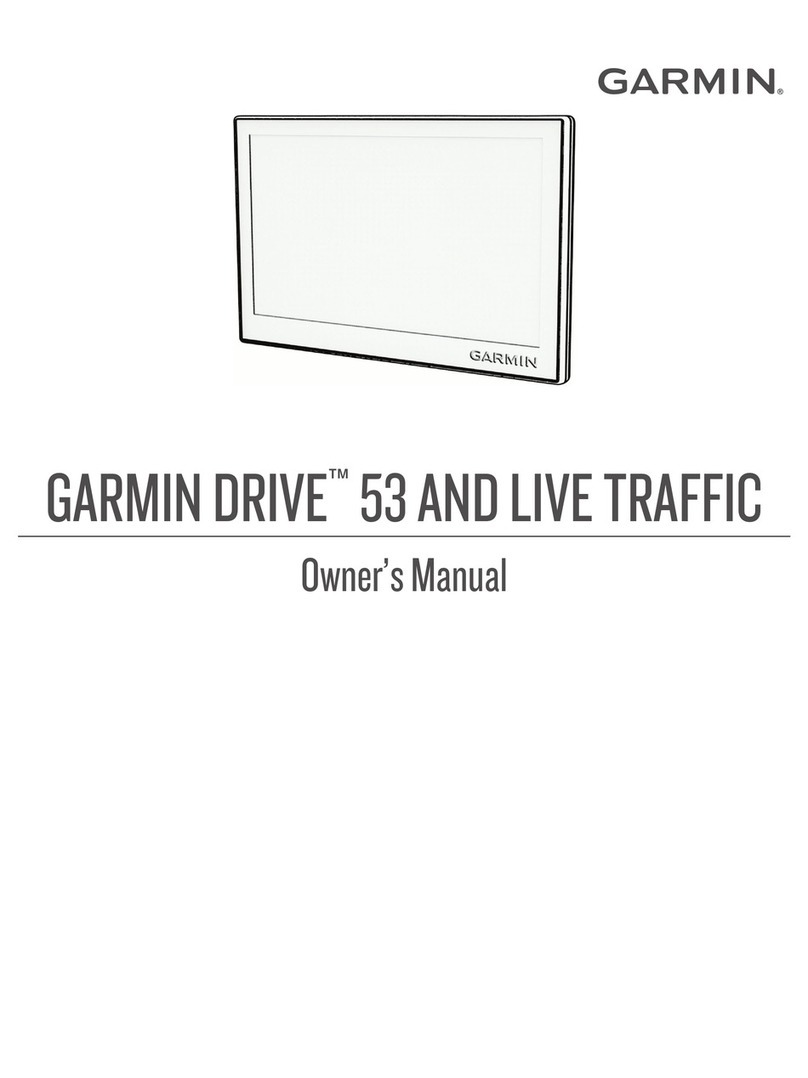bca TRACKER DTS User manual

Search/Transmit Button
Sende-/Empfangsschalter
Sélecteur mode recherche/émission
Pulsante ricrca/trasmissione
Boton de busqueda/transmisión
O
P
T
I
O
N
S
TRANSMIT
E
A
R
C
H
S
On/Off Switch (depress to turn)
Ein/Aus Schalter
Bouton Marche / Arrêt
Pulsante di accensione (abbassare per girare)
Interruptor (apretar y girar)
Battery Door
Batteriefach
Logement des piles
Sportello batterie
Compartmento de bateria
Waist Attachment Mount
Bauchgurt
Support sangle de taille
Moschettone di fissaggio all cintura
Hebilla de cierre (cintura)
Waist Attachment Mount
Bauchgurt
Support sangle de taille
Moschettone di fissaggio all cintura
Hebilla de cierre (cintura) Direction Lights
Richtungsanzeige
Affichage de la direction
Spie luminose di direzione
Luces direccionales
Options Button
Optionenschalter
Bouton options
Pulsante opzioni
Boton de opciones
Shoulder Strap Mount
Schultergurt
Support sangle d’épaule
Attacco spallaccio
Correa de hombro
Loudspeaker
Lautsprecher
Haut-parleur
Altoparlante
Altavoz
Distance Indicator/Battery Power Display
Distanzanzeige/Batterieladungsanzeig
Indicateur de distance/Témoin de batterie
Indicatore di distanza/Display del livello batteria
Indicator de distancia/Estado de bateria
Transmit Light
Sendekontrolllampe
Témoin d’émission
Spia luminosa di trasmissione
Indicador de transmisión
OPERATING ELEMENTS
BEDIENUNGSELEMENTE
FONCTIONNEMENT ET AFFICHAGE
COMPONENTI
ELEMENTOS DE USO
1
2
3
4
7
8
9
8
6
Transmitting Antenna
Sende-antenne
l'antenne émettrice
Antenna di trasmissione
Antenas de transmisión
10
5

5
Quick Reference
4
ENGLISH
Rescue Technology, Inc.
Model No.: Tracker DTS
FCC ID: OUNDTS1
This device complies with part 15 of the FCC Rules.
Operation is subject to the following two conditions:
(1) This device may not cause harmful interference, and
(2) this device must accept any interference received, including
interference that may cause undesired operation.
Note:
This equipment has been tested and found to comply with the limits for a
Class B digital device, pursuant to part 15 of the FCC Rules. These
limits are designed to provide reasonable protection against harmful
interference in a residential installation. This equipment generates,
uses and can radiate radio frequency energy and, if not installed and
used in accordance with the instructions, may cause harmful interference
to radio communications. However, there is no guarantee that
interference will not occur in a particular installation. If this
equipment does cause harmful interference to radio or television
reception, which can be determined by turning the equipment off and on,
the user is encouraged to try to correct the interference by one or more
of the following measures:
• Reorient or relocate the receiving antenna.
• Increase the separation between the equipment and receiver.
• Connect the equipment into an outlet on a circuit different from that
to which the receiver is connected.
• Consult the dealer or an experienced radio/TV technician for help.
Caution:
Any changes or modifications not expressly approved by the party
responsible for compliance could void the user’s authority to operate
this device.
This quick reference page is an introduction to proper use of the Tracker
DTS. For more detailed information, read the entire manual and consult our
website: www.bcaccess.com.
Basic functions
On/off -- Push and turn the on/off switch on the back of the
Tracker to the "on" position. It performs a self-diagnostic check,
displays battery power in percent, and enters transmit mode.
Change batteries before they reach zero percent.
Search mode -- Push the red search/transmit button, hold until
"SE" is displayed, then quickly release.
Return to transmit -- Press the search/transmit button until "tr"
is displayed.
Searching with the Tracker DTS
The objective for beginners is to find the strongest signal (lowest
distance reading) and immediately begin probing the area.
In the event of a burial, switch your Tracker (and all other bea-
cons) to search mode. "SE" will flash in the distance window until
a signal is captured.
Primary/signal search: If there is a "last seen point," start your
signal search there, and search downhill. Otherwise, start your
signal search at the top of the slide path. Allow a maximum of 20
meters between searchers or between switchbacks if only one
searcher. Slowly rotate your Tracker back and forth and vertical-
ly until you engage the signal.
Secondary search: Once a signal is engaged, align the Tracker
so that any of the center three lights are flashing and move
quickly in the direction the Tracker is pointing. Make sure the
number in the distance display is decreasing. If it is increasing,
turn 180 degrees. Inside 10 meters, move slowly and try to keep
the center search light engaged. Your direction of travel might
be straight or slightly curved.
Pinpoint search: Within three meters, use your beacon close to
the snow surface and look for the smallest distance reading.
Ignore sudden fluctuations in distance and direction; the
strongest signal is often just past these fluctuation points. Begin
probing at the smallest reading (strongest signal).

Single Burial Search
Multiple Burial Search
If you suspect there is more than one victim, carefully search the
entire area. If the Tracker displays more than one signal, follow
the one with the lowest distance reading. Once you are within
about 10 meters, the Tracker will isolate that signal. If possible,
turn off the first beacon once it is found. If you can’t turn it off,
and don’t see a second signal, conduct a "primary search" for
the next beacon. Once you are closer to that beacon, the
Tracker will isolate that signal. For advanced multiple burial
searching, read the entire manual or see our website.
6
Familiarization
7
Quick Reference
ENGLISH
10m 20m
10m
10m
20m
Thank you for choosing the Tracker DTS, the world's first digital
avalanche beacon, and the first beacon with a high-precision
dual antenna system. Regardless of the transceiver, no
avalanche beacon can save lives without a fully trained user.
Practice frequently with your Tracker before going into the back-
country. Learn and understand the inherent dangers of
backcountry travel. Become educated in avalanche hazard eval-
uation, route selection, and self-rescue.Always carry an
avalanche beacon, probe, and shovel—and always travel with a
partner. Make sure all rescue equipment is functioning properly
before venturing into the backcountry.
This owner’s manual covers the basic techniques required to use
the Tracker DTS effectively. To increase your efficiency, please
refer to the advanced techniques described on our website:
www.bcaccess.com. Here you will also find important resources
for obtaining avalanche education and updates on regional
avalanche conditions.
To ensure warranty protection, please return the enclosed war-
ranty registration card.
FAMILIARIZATION
Adjustment/Fitting
The Tracker DTS should be worn underneath your outer gar-
ments, as shown in Figure A. The concave side should be snug
against your lower left rib cage. To search, disconnect one or
Shoulder Strap (black)
Waist Attachment
Buckles
Waist Strap (burgundy)
Figure A Harness
Objective: Locate signal
•If no "last seen point," search entire debris pile
•Rotate Tracker horizontally/vertically
•Max 20m between searchers or switchbacks
Objective: Locate smallest distance reading
(strongest signal)
•Use Tracker close to snow surface
•Ignore fluctuations in distance and direction
•Begin probing at lowest distance
•Use Tracker in hole during deep excavations
Objective: Move quickly to 10m,
slowly to 3m
•Keep flashing light within center 3 windows
•Move quickly in direction Tracker is pointing
•Make sure distance is decreasing
•Slow down at 10m
PRIMARY
SEARCH
>40m
PINPOINT
SEARCH
< 3m
SECONDARY
SEARCH
3–40m

8
Familiarization
Options
Auto-Revert System
At startup, the user can engage the Tracker’s auto-revert safety
feature by pressing the options button (6) while pressing and
turning the on/off switch. With auto-revert engaged, the Tracker
will revert to transmit mode after five minutes in search mode.
If auto-revert is engaged, “Ar” will be shown in the power display
after the diagnostic testing. If auto-revert is not engaged, “nr” will
be displayed.
If auto-revert has been engaged, then after five minutes in
search mode, an alarm will sound for ten seconds and "Ar" will
flash repeatedly in the distance indicator. To remain in search
mode, press the search/transmit button or the options button at
any time during the ten-second alarm period. If ten seconds
elapses, “tr” will appear and the Tracker will revert to transmit
mode.
If auto-revert is not engaged, the Tracker will sound a short
alarm every ten minutes to remind the user that he or she is in
search mode.
Special Mode
Special (SP) mode is a feature designed to assist searchers in
the event of a multiple burial. It can help searchers isolate indi-
vidual signals when searching for more than one transmitter at a
time. In search (SE) mode, the Tracker only displays the
strongest signal (once the searcher is within about 10 meters). In
special (SP) mode, however, it will display all signals, regardless
of their strength—providing they are within special mode’s
reduced search window (Figure E, page 11). In special mode,
the search area is reduced from 180 degrees to about 75
degrees: signals will only be displayed if they are captured within
the center three directional lights.
Special mode can only be entered while the user is in search
mode. To enter SP mode, press the options button (6). Release
the button when "SP" appears in the display window. When sig-
nals are detected in this mode, they are displayed for a shorter
time than in SE mode.
Mute Mode
To mute the sound while in search mode, push the options but-
9
Familiarization
both of the diagonal waist attachment buckles and fully extend
the shoulder strap.
To use the Tracker without the harness, disconnect the waist
attachment buckles and thread the shoulder strap back through
the shoulder strap mounting hardware.
Startup/Testing
Turn on the Tracker DTS by depressing and then turning the
on/off switch (1) clockwise (see inside front cover). When turned
on, the Tracker runs through a brief diagnostic test of both the
transmitter and receiver, then indicates the remaining battery life
in the battery power display/distance indicator (2). A reading of
95 to 99 percent indicates fully charged batteries.
After the diagnostics, the Tracker will enter transmit mode (tr).
The flashing transmit light (3) confirms the unit is in transmit
mode.
Power Supply
The Tracker DTS operates with three AAAalkaline batteries. Use
only high-quality alkaline batteries. Do not use rechargeables.
Note that the battery level percentage is approximate, depending
on battery manufacturer and operating temperature. The Tracker
will operate safely down to and below a zero battery power dis-
play. The manufacturer suggests, however, that you replace your
batteries frequently, well before this occurs.
If the Tracker is subjected to excessive moisture, open the bat-
tery door (4) to help allow the unit to dry. Remove batteries
during extended periods of inactivity.
Search/Transmit
To enter search mode, push the search/transmit button (5) for at
least one second, but for no longer than two seconds. During
this time, the distance indicator (2) will display two dashes
(“– –”). Release your thumb when the display changes from
“– –” to “SE” and the Tracker sounds a series of three beeps. If
the button is released before or after this time, it will remain in
transmit mode.
The Tracker can be switched instantly from search (SE) to trans-
mit (tr) mode at any time by simply pushing the search/transmit
button.
ENGLISH

11
Operating Instructions
10
Operating Instructions
ton (6) for three seconds until “LO” is displayed, then release. To
turn the speaker back on, perform the same operation. “L1” will
be displayed, indicating the speaker is back on.
OPERATING INSTRUCTIONS
Searching
The Tracker DTS operates using the 457 kHz international stan-
dard frequency. It is fully compatible with all transceivers
adhering to this standard. The Tracker, however, offers many
advancements in beacon searching and is operated differently
from “older” style (analog) beacons.
The search process includes three phases: the signal (or prima-
ry) search, the fine (or secondary) search, and the pinpoint
search.
Signal/Primary Search
The signal search refers to the process of establishing a search
pattern and looking for a signal. The search pattern will be
defined by the victim’s last seen area, the size of the slide, and
the number of searchers. Refer to Figures B and C, below, to
establish a primary search pattern. If the slide is less than 20
meters wide, the primary search path will be directly down the
center. If the victim’s last seen area is well defined, the primary
search will follow a direct path down the fall line from this point.
Prior to the primary search, be sure that all transceivers are
turned to search mode. Rotate the Tracker slowly back and forth
on a horizontal and vertical plane (Figure D) while moving in the
direction as defined by your primary search pattern. While
searching, be aware of other physical clues, such as equipment
or extremities protruding from the snow surface. When no signal
is detected, “SE” will flash in the distance indicator. Once a sig-
nal is detected consistently, mark this spot and begin the fine
search.
Secondary/Fine Search
The secondary search (also referred to as the fine search) is the
portion of the search from where you have detected a steady
signal to where you are close to the victim.
Once the signal is consistently detected, rotate the Tracker slow-
ly on a horizontal plane until the center direction light (7) is
blinking. The Tracker is now pointed in the direction of the
strongest signal, or your direction of travel (Figure E). The four
lights (7) on either side of center tell you which way to rotate the
ENGLISH
;;;;
;;;;
;;;;
;;;;
;;;;
;;;;
;;;;
;;;;
Figure B Primary Search
One searcher/Slide wider than 20 meters
Figure C Primary Search
Multiple searchers/Slide wider than 20 meters
Area last seen Area last seen
20m
20m
20m
20m
10m
10m
10m
10m 10m
20m
Rotate the Tracker slowly
in your hand, but move
rapidly down the search
path. Do not abandon
your search path until you
have captured a strong,
steady signal. Ignore irreg-
ular signals, which can
sometimes be caused by
electrical interference.
Figure D
Primary/Signal search
Direction
of search
path
O
P
T
I
O
N
S
B
a
t
t
e
r
y
%
t
a
r
t
u
p
D
I
S
T
A
N
C
E
TRANSMIT
E
A
R
C
H
S
The Tracker is very sensitive. Slight
movement in any direction will actuate
a different search light. Move it very
slowly so as not to “skip” over the
center search light window.
In Special (SP) mode, signals
are only displayed if they fall
within the center three
windows.
Direction of
strongest signal
Figure E Windows

Operating Instructions
13
12
Operating Instructions
Tracker to engage the center light. The distance indicator (2) tells
you, in approximate meters, how far you must travel (1 meter =
1.1 yards or 3.3 feet). If the number on the distance indicator is
increasing, you are on the same axis as the victim’s signal, but
moving in the opposite direction. Turn 180 degrees, engage the
center search light again, and continue your search in the direc-
tion the Tracker is pointing. This is preferable to walking
backwards, in which case the Tracker will often flash “SE” rather
than show a direction and distance. If you are stationary, but the
distance is significantly changing, you are probably detecting the
signal of another rescuer. Make sure all rescuers are in search
mode before continuing.
You may find that, while following the directional lights, your
route follows an arc. This is because the Tracker DTS performs
the fine search using the "flux (or induction) line" method (see
Figure F). It follows the shape of the electromagnetic signal, or
flux line pattern, coming from the transmitting beacon’s antenna.
The distance displayed is the distance to be traveled along that
flux line, not the straight-line distance from you to the victim.
Pinpoint Search
The pinpoint search is the final part of the beacon search, which
is performed on foot with the beacon positioned at or near the
snow surface. The objective of the pinpoint search is to locate
where the signal is strongest and to reduce the area to be
probed.
Move your beacon very slowly along the surface of the snow
during the final three meters of the pinpoint search. It can be
helpful to tilt the front of the Tracker down, although it is not nec-
essary. Ignore sudden fluctuations in distance and direction,
often followed by no distance reading and/or "SE" in the distance
indicator. This means you are very close. The lowest reading will
be near this point.
From the point where you have located the smallest reading, it
can be helpful to "bracket" at 90-degree angles to the left and
then to the right in search of a lower reading (Figure G, bird’s-
eye view). Repeat if necessary along both axes. Begin probing
at the lowest distance reading.
TIP: PINPOINTING/PROBING ON A LINE
Until the Tracker is very close, it will point you in the general
O
P
T
I
O
N
S
D
I
S
T
A
N
C
E
revertsevery5min
toTRANSMIT
orentermanually
PRESS1SECOND
toenter
SEARCH
mode
TRANSMIT
TRANSMIT
E
A
R
C
H
S
™
O
P
T
I
O
N
S
D
I
S
T
A
N
C
E
revertsevery5min
toTRANSMIT
orentermanually
PRESS1SECOND
toenter
SEARCH
mode
TRANSMIT
TRANSMIT
E
A
R
C
H
S
™
Figure F Flux lines
The Tracker follows the shape
of the electromagnetic flux
lines coming from the trans-
mitting beacon’s antenna.
Your path during the fine
search will be either
straight (point A)
or curved (point B),
depending on the
orientation of your
beacon when the
signal is first captured.
Note: the Tracker’s transmit-
ting antenna (10) is oriented
at a 45-degree angle to the
long axis of its case, as
shown.
1.6
SE
1.0
SE
1.6
1.6 1.6
low
reading spike
reading lowest
reading
(horizontal burial)
spike
reading
(horizontal burial)
90o
90o
Snow
surface
Figure G Pinpoint Search
Bracketing: From the point where you have located the smallest
reading, it can be helpful to "bracket" at 90-degree angles to the left
and then to the right in search of a lower reading (bird’s-eye view).
Pinpointing on a line: You will encounter a “spike” reading where
the vertical aspect of the flux pattern is perpendicular to the search-
ing beacon (cross-section view). This is indicated by a suddenly
weaker signal (higher distance reading) and fluctuations or loss of
directional lights, and/or “SE” in the display. Search past the spike for
a lower distance reading along the line you’ve been travelling. If you
do not deviate from this line, it is not necessary to bracket.
Bird’s-eye
view
Cross-section
view
Transmitting Beacon
ENGLISH

Operating Instructions
15
Operating Instructions
14
direction of the buried beacon. Once you are within less than
approximately three meters, however, there is a "spike" reading
where the distance and direction lights fluctuate and the distance
display might flash "SE". At this point, the searching Tracker is
temporarily perpendicular to the vertical aspect of the flux pattern
of the buried beacon (Figure G, cross-section view). If you draw
a line in the snow or place a long object on the snow in the direc-
tion you were pointing just before the spike, you can limit your
pinpoint search to that line and then probe along it. If you are
searching with a partner, he or she can probe ahead of you, on
the line you have established. Known as "pinpointing on a line,"
this technique performed properly is the most efficient method for
pinpointing with the Tracker.
In most cases, the buried beacon will be oriented roughly hori-
zontal, there will be two “spikes,” and the lowest reading will be
between them, as shown in Figure G. If the transmitter is buried
vertically, there will be only one spike and a low reading on either
side. In either case, probe at the lowest reading. If you do not
strike the victim, then continue probing along the flux line.
Probing/Digging
At the point where the distance has reached a minimum, probe
the area, preferably along the flux line. Your probe should enter
the snow perpendicular to the slope surface. Once you have
confirmed the victim’s location, leave the probe in the snow and
begin digging. To monitor your progress during a deeper burial,
continue to use the Tracker inside the hole. Upon reaching the
victim, first uncover his or her face. In the event of multiple buri-
als, turn off the victim's beacon (if possible) before continuing the
search for the next victim.
Multiple Burials
Multiple beacon searches are more difficult and complex than
single searches. They require practice and an understanding of
flux lines. A thorough understanding of the Tracker’s special (SP)
mode can also greatly increase the efficiency of the multiple
search, though it is not necessary.
If you begin to receive more than one set of signal data, you
probably have a multiple burial. Stay in search (SE) mode, and
focus on the closest distance reading, attempting to engage that
signal in the center search light. If you are roughly the same dis-
tance from both transmitters, the Tracker will often flash “SE”.
Once you are significantly closer to one signal–and within about
10 meters of it–the Tracker DTS (in SE mode) will “lock” onto
that signal and mask out the others. Once you are locked in, the
Tracker will behave very similar to how it does in a single bea-
con search. Pay attention to the readings you last received from
the other beacon; they will give you an indication of where to go
after finding the closest one.
Once you have located the first beacon (beacon 1), turn it off, if
possible. Even if this is not possible, you might already have a
good idea of where beacon 2 is located. In that case, move in
that direction until the Tracker isolates that signal. If you do not
have an idea of where to look next, then you have three options
(Figure H): A) return to the point at which you had two clear sig-
nals, and start your search for beacon 2 from that point,
remaining in search mode; B) in search mode, perform a prima-
ry search away from beacon 1 until you detect and isolate
beacon 2; C) move directly from beacon 1 to beacon 2 using
special mode. This is the most efficient technique, but requires
the most practice.
TIP: SPECIAL MODE
Special (SP) mode enables the Tracker to display the distance
and direction of signals other than those of the closest beacon. It
also reduces the Tracker’s search “window” to the center three
directional lights, enabling the searcher to mask out beacon 1
and differentiate it from beacon 2. SP mode is used to determine
approximately what direction and distance to go to get closer to
beacon 2. Once you are closer always switch back to SE mode.
ENGLISH
10m
10m 20m
A
C
B1
2
Figure H
Multiple burials

Operating Instructions
16 17
Operating Instructions
and perform a primary search of the remaining unchecked areas
within the debris pile.
Three or more victims
If more than two beacons are buried, multiple burials become
extremely complex with any transceiver. If using special mode,
after locating beacon 1, it is helpful to start each fine search from
the same point, most likely back at beacon 1. By returning to this
reference point, you are likely to recognize which signals you
have located and which ones you have not. If using search
mode, after locating beacon 1, it is best to perform a primary
search pattern away from that beacon through the remaining
unchecked area. The Tracker will isolate each beacon as you
become closer to that beacon than the ones already located.
For more details on multiple burials, please refer to our website:
www.bcaccess.com.
ENGLISH
Step back from beacon 1 at least three meters and re-engage
beacon 1 in your center search light. With the center search light
engaged, switch the Tracker to SP mode (Figure I). Then rotate
the Tracker slowly until another signal is detected (beacon 2),
most likely with a larger distance reading. If the Tracker is rotated
more than about 40 degrees away from the flux line of beacon 1,
that signal will disappear, allowing you to focus on the signal
from beacon 2. This “filtering” process can often simplify multiple
searches.
If two signals are captured in the same directional window, or no
other signal is captured at all, it can be helpful to step three
meters to the right or left and try again.
Once you have located another signal, begin to move in that
direction. If the distance consistently decreases, you are going in
the right direction. Travel far enough in SP mode to confirm the
distance is decreasing and which way the flux line is trending. If
the flux line is curving sharply, continue in SP mode until it
becomes straighter. If more than one signal is being displayed
and it becomes unclear which one to pursue, continue in the
direction you have been searching. Always switch back to SE
mode when you think you are getting closer to beacon 2 than
beacon 1.
If after finding a victim, you do not know how many are still
buried, it is helpful to enter SP mode and check all four sides
surrounding that victim. If still no signals are detected, continue
the search as if it were a multiple burial. Revert to search mode
3
1
2
Figure I
Multiple burials/
Special mode
Only travel far enough in SP
mode to confirm the distance
is decreasing and which way
the flux line is trending. At
this point, a good rule of
thumb is to ignore further
readings and swiftly travel at
least 3/4 of the distance dis-
played. Then lock in beacon
2 by switching back to search
mode.

18
TECHNICAL SPECIFICATIONS
•Frequency: 457 kHz
•Batteries: ThreeAAA/LR03 alkaline batteries; do not use rechargeables
•Battery life: minimum 1 hour in search mode after 200 hours in transmit
mode (approximately 250 hours in transmit only or 50 hours in search
only)
•Receive range: up to 50 meters (with Tracker DTS transmitting)
•Weight: 10.88 ounces (310 grams), including strap and batteries; 8.3
ounces (200 grams) without strap and batteries.
•Size: 5-3/4” x 3-1/4” x 1-1/4” (14cm x 8cm x 3cm)
•Minimum temperature range (at 66.7 percent battery power):
transmit mode: -10°C to +40°C (14°F to 104°F);
search mode: -20°C to +40°C (-4°F to 104°F)
•U.S. Patent number 6,167,249
Do not place cellular phones, communication radios, or any other electronic
equipment within 6" (15 cm) of the Tracker DTS while performing a trans-
ceiver search. In receive mode, irregular readings can be caused by these
and other sources of electrical interference, such as power lines, electrical
storms, and electrical generating equipment. In transmit mode, the Tracker
DTS can tolerate equipment touching end-to-end or as close as 1" (2.5 cm)
if stacked horizontally.
Made in U.S.A. at an ISO-9002-certified facility.
Conforms to the R&TTE harmonized version of the EN 300 718 and meets
or exceeds the requirements of Articles 3.1, 3.2, and 3.3.
FCC ID: OUNDTS1
CANADA: 35811021823
Technical Information
Other manuals for TRACKER DTS
3
Table of contents
Other bca GPS manuals
Popular GPS manuals by other brands
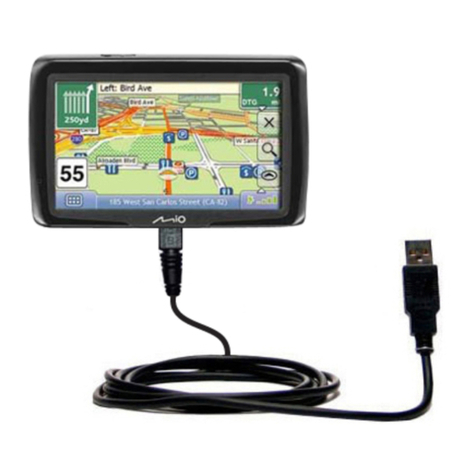
Mio
Mio Moov R503T user manual

ZL electronics Technology
ZL electronics Technology 900C user manual
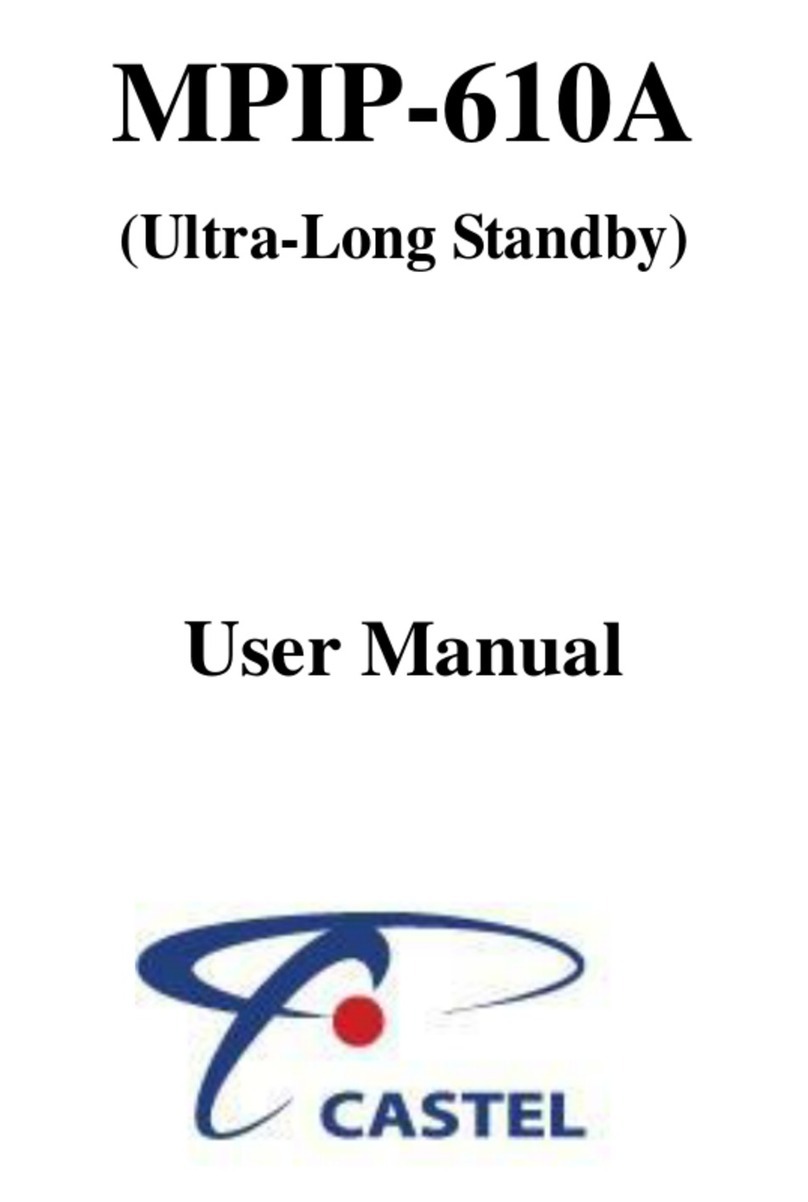
Castel
Castel MPIP-610A user manual

UNICORECOMM
UNICORECOMM UM220-INS NF quick start guide
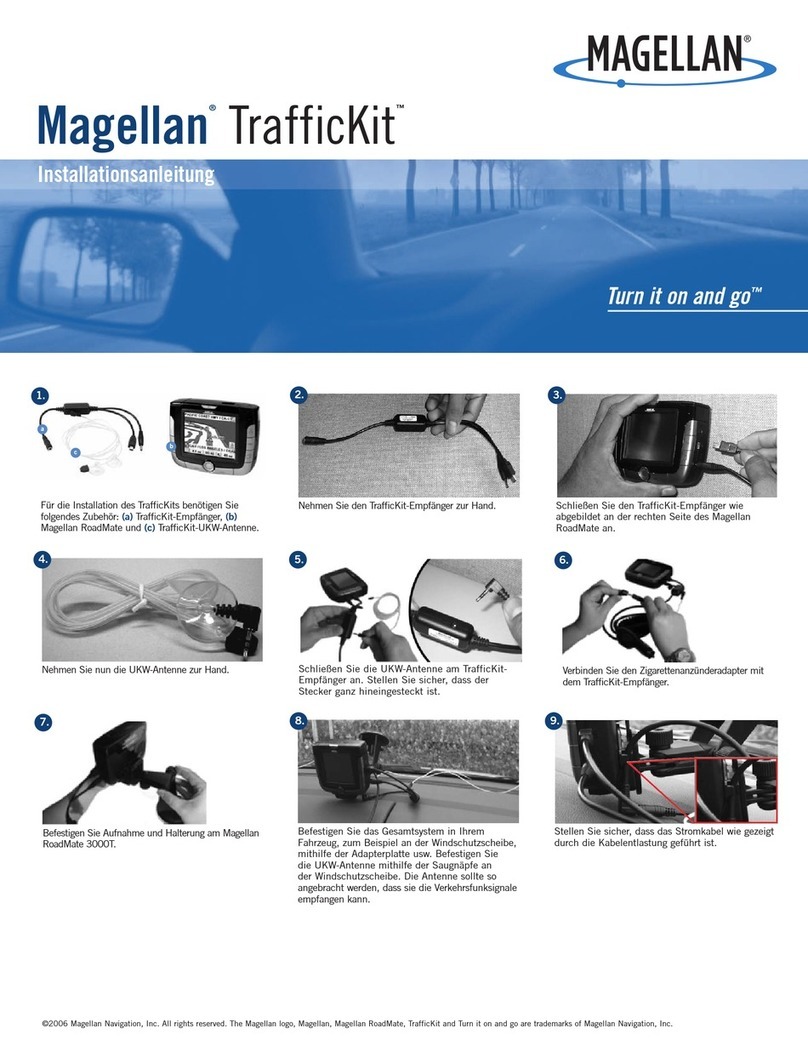
Magellan
Magellan RoadMate 3000T - Automotive GPS Receiver installation instructions
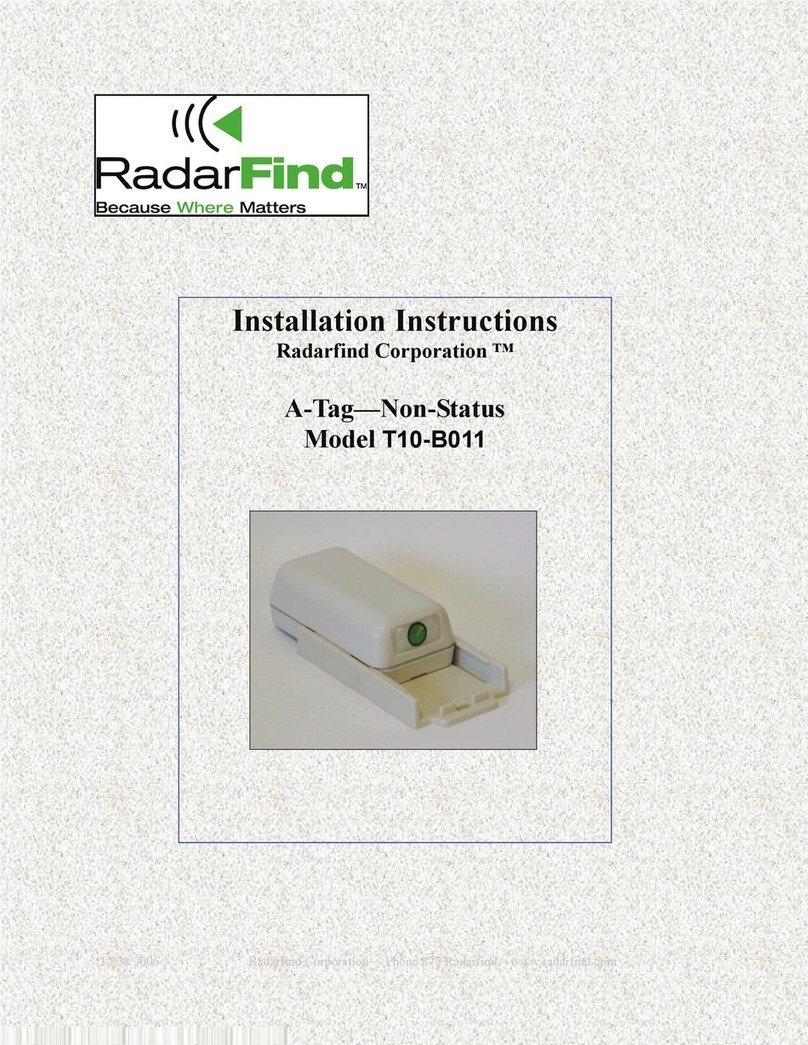
RadarFind
RadarFind T10-B011 installation instructions
